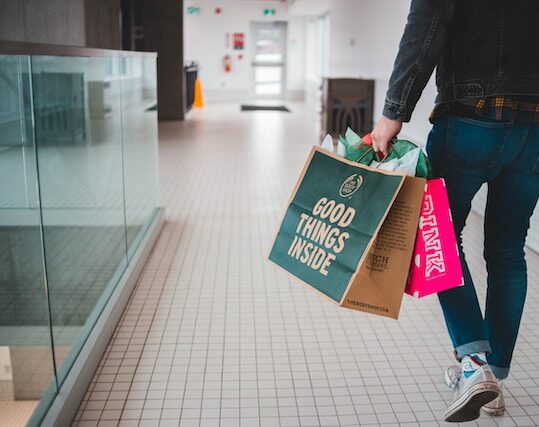There are two types of buying behavior’s – impulsive and compulsive. Both can lead to overspending, but there are some key differences between the two. Impulsive buying is driven by a sudden urge or desire to make a purchase. This type of buying is often spur-of-the-moment and not well thought out. Compulsive buying, on the other hand, is driven by a need to buy, even if there is no real want or need for the item. Compulsive buyers often feel like they have to buy something, even if they can’t afford it or don’t really need it.
What is impulsive buying?
(Photo by Jacek Dylag on Unsplash)

Impulsive buying is defined as making a purchase without thinking it through or considering the consequences. This type of buying is usually spur-of-the-moment and done on a whim. Compulsive buying, on the other hand, is defined as an irresistible urge to buy something, even if you don’t really need it or can’t afford it. This type of buying is usually driven by a deep-seated emotional need.
What is compulsive buying?
(Photo by Erik Mclean on Unsplash )

Compulsive buying, also known as oniomania, is characterized by an irresistible urge to shop. People with this disorder often feel a need to buy something even if they don’t really need it or can’t afford it. Compulsive buyers may go on spending sprees and end up with large amounts of debt.
Compulsive buying disorder
There are a number of reasons why someone may develop compulsive buying disorder, including low self-esteem, anxiety, depression, and feelings of emptiness or loneliness. Many people with this disorder use shopping as a way to cope with negative emotions or stress. Shopping gives them a temporary “high” that helps them feel better in the short-term but ultimately makes their problems worse in the long-run.
If you think you may have compulsive buying disorder, it’s important to seek professional help. This disorder can be very damaging to your finances, your relationships, and your overall wellbeing. Treatment typically involves therapy and/or medication. With treatment, you can learn how to manage your disorder and regain control over your life
Impulsive and compulsive buying – Key differences
When it comes to spending money, there are two different types of shoppers: those who impulse buy and those who compulsively buy. Both types of shoppers may end up spending more money than they originally intended to, but there are key differences between the two.
Impulsive buyers typically make decisions on the spur of the moment, without much thought or planning. They may see something they want and make a snap decision to buy it, even if they can’t really afford it. Compulsive buyers, on the other hand, often plan their purchases in advance and may even spend hours researching an item before making a purchase.
There are also differences in why people impulse buy or compulsively buy. Impulse buyers may do so because they’re feeling emotional and want to treat themselves, while compulsive buyers may do so because they’re trying to fill a void in their life. Whatever the reason, both types of shoppers can end up spending more money than they intended to.
How to overcome impulsive buying?
If you’re someone who tends to make impulsive purchases, it can be helpful to take a step back and think about what’s driving that behavior. Whether it’s boredom, a need for instant gratification, or something else entirely, there are a few things you can do to overcome impulsive buying:
- Identify your triggers: What situations tend to lead to impulse buys? Once you know what they are, you can take steps to avoid them.
- Create a budget: Having a spending plan in place can help you stick to your financial goals and resist temptation.
- Think before you buy: Take a few minutes to consider whether you really need or want something before making a purchase.
- Wait it out: If you’re still unsure about whether to buy something, sleep on it. Oftentimes, the urge to purchase an item will fade after a day or two.
How to overcome compulsive buying?
Compulsive buying, also known as shopping addiction or oniomania, is a behavioral addiction characterized by the excessive and uncontrolled urge to buy things, often leading to financial problems, stress, and other negative consequences. Overcoming compulsive buying can be challenging, but here are some strategies that may help:
- Recognize the problem: Acknowledge that you have a problem with compulsive buying and that it is causing you negative consequences.
- Seek professional help: Consider seeing a therapist or counselor who specializes in addiction or compulsive behaviors. They can help you understand the root causes of your compulsive buying and develop strategies to overcome it.
- Create a budget: Develop a realistic budget and stick to it. Avoid using credit cards and limit your spending to cash or a debit card.
- Identify triggers: Recognize the situations, emotions, or events that trigger your urge to buy things, and develop strategies to manage or avoid them.
- Practice mindfulness: Learn to be present in the moment and tune into your thoughts, feelings, and bodily sensations. Mindfulness can help you become more aware of your compulsive buying urges and better manage them.
- Find alternative activities: Engage in activities that give you pleasure and help you relax, such as exercise, meditation, or hobbies that don’t involve shopping.
- Build a support system: Surround yourself with people who are supportive and understanding of your efforts to overcome compulsive buying. Join a support group or online community where you can connect with others who are going through similar struggles.
Remember that overcoming compulsive buying is a process, and it may take time and effort. Be patient with yourself and celebrate your progress along the way.
What causes compulsive buying behavior?
There is no single answer to this question as the underlying causes of compulsive buying behavior can vary from person to person. However, there are some common contributing factors that are often seen in people who struggle with this problem, such as:
- A need to feel in control or a fear of losing control. For many people, compulsive buying can be a way of regaining a sense of control in their lives when they feel like everything else is spiraling out of control.
- A need for approval or validation. Some people buy compulsively in an attempt to seek approval or validation from others, either directly through gifts or indirectly through showing off their possessions.
- A way to cope with emotions or stress. For some people, compulsive buying can be a form of self-medication, used to numb negative emotions or escape from stressful situations.
- An addictive personality. Some people are simply more prone to addiction than others, and this can extend to addiction-like behaviors like compulsive shopping.
What causes impulsive buying behavior?
Impulsive buying behavior can have a variety of causes, including:
- Emotional triggers: Impulsive buying can be a way to cope with negative emotions such as stress, anxiety, or boredom. Shopping can provide a temporary distraction or sense of pleasure that helps alleviate these feelings.
- Social influence: Peer pressure, advertising, and social media can all contribute to impulsive buying by creating a sense of urgency or desire for certain products.
- Lack of self-control: Some people may struggle with self-regulation or impulsivity, making it difficult to resist the temptation to buy things.
- Low self-esteem: Individuals with low self-esteem may use shopping as a way to boost their mood or feel better about themselves.
- Cultural norms: In some cultures, shopping may be seen as a way to demonstrate success or status, leading to increased pressure to buy things.
- Addictive tendencies: Some individuals may have a predisposition to addictive behaviors, including impulsive buying.
What are the types of compulsive and buying?
There are four different types of compulsive buying:
- Shopaholics anonymous: This type of compulsive buyer is addicted to the act of shopping itself, and gets a high from the act of buying things. They may or may not actually need the items they purchase.
- Bulimic shoppers: These individuals often go on shopping sprees where they buy large quantities of items, more than they could ever use or afford. They may feel a sense of shame or guilt after their binge, and try to “purge” themselves by returning the items or giving them away.
- Compulsive spenders: These people tend to spend money impulsively, without thinking about whether or not they can afford it. They may charge items to credit cards and then have difficulty making the payments.
- Antisocial shoppers: This type of compulsive buyer often shops in secret, and lie about their purchases to others. They may feel ashamed or embarrassed about their habits, and keep them hidden from others.
Featured Image By – freestocks on Unsplash








